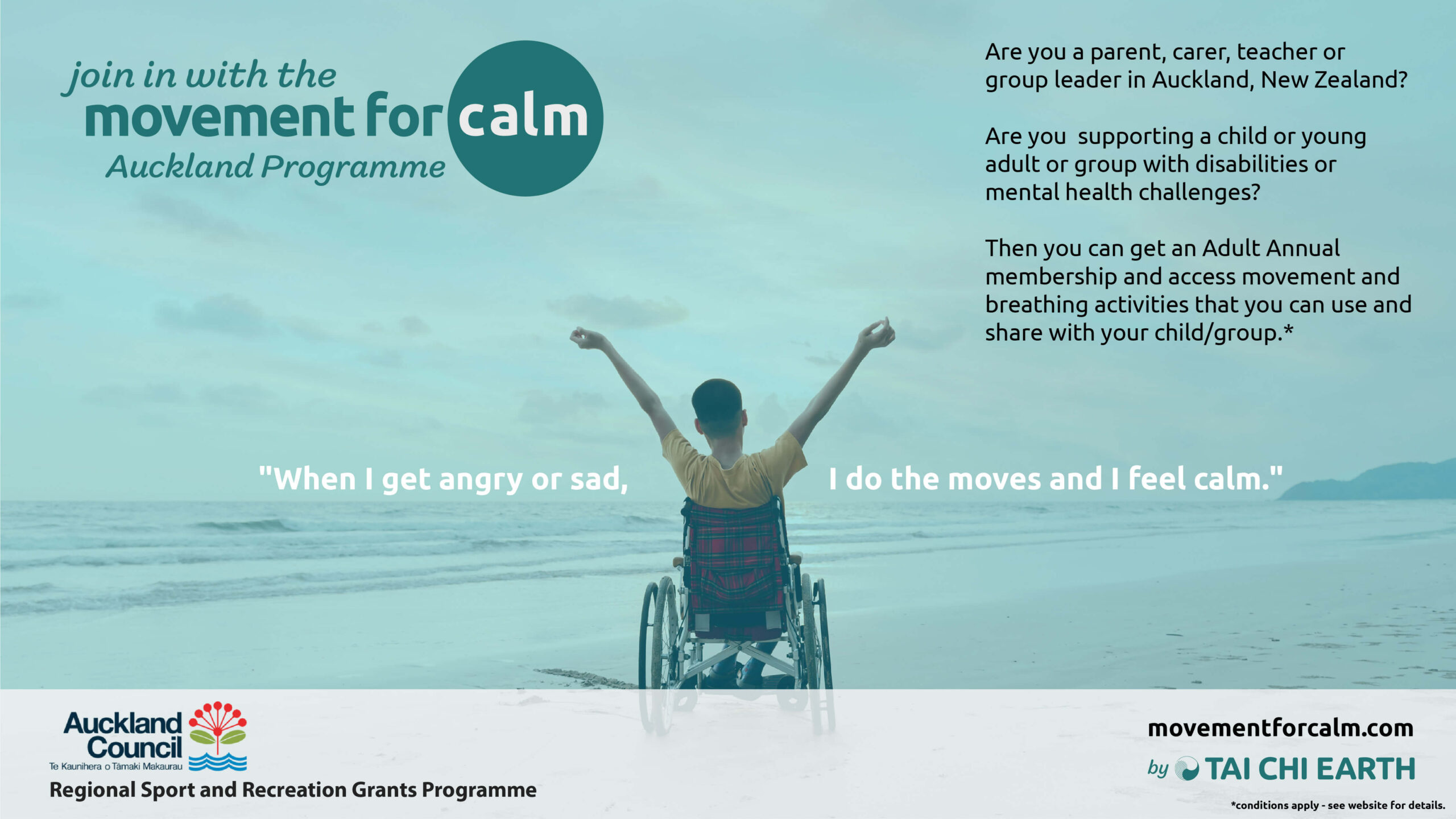I walked into a class one morning and this is what a student with learning difficulties said to me:
‘I got really angry with my brother last night and I did a few of these (showing me arms up/breath in, arms down/breath out) and it was ok’. The class had been doing tai chi for a few months with me on a weekly basis and the class teacher was also proactive about using tai chi moves during the week for short bursts – first thing in the morning, at transition times and when it felt needed. This was just so great to hear someone taking it on as a tool to use when needed. The more it is practiced the easier it is to self regulate.
Inclusive Tai Chi – I work with young people with special needs and I enjoy sharing tai chi and qigong with people with different levels of ability both physical and intellectual. I have been doing this for the last decade. The importance of tai chi and qigong activities for everyone, in particular for those living with challenges is always there and continues to reinforce my understanding and also surprise me with new insights. The importance of engaging body, mind and breath.
Tai chi has flowing sets of movements and is sometimes described as ‘moving meditation’. Qigong has an extra focus on linking the breath to repeated individual movements. Tai chi and qigong can be practiced standing or seated and many of the moves, particularly in qigong do not require lots of space. There are many benefits, both physical and mental.
We developed the ‘Physical and Emotional Development Programme’ and this focuses on 5 areas – Awareness, Balance, Coordination, Core Strength and Self Regulation. I will be writing some articles soon about this programme where I am looking forward to sharing some stories on how it has helped the students develop skills in each of the areas.
When someone tells me of the benefits to themselves or someone they know or l physically see the change in front of me – this is really powerful and is a constant reminder why we teach and share these skills for life. Providing tools to help us navigate our worlds. I have learnt lots from the students I have taught – sometimes they come up with creative ideas, names and ways of adapting a move so that they can access it in their own way.
The ability to self regulate is so important for everyone and tai chi and qigong can be a fantastic way of doing this. What I have noticed is that for people with disability, this is really significant because challenges can be large and the ability to have tools to calm and focus and energise can be really powerful to their overall wellbeing.
Here are just a few of the anecdotes which jump first to mind:
A parent of a child with Special Needs said ‘he loves cloud hands and the relaxation with his breathing…he was very proud to show me’
A teacher who commented that a student after a term of tai chi focusing on coordination was now accessing resources in the classroom using both hands at the same time.
A parent who saw their child making a soft, comfy space at home and doing belly breathing with their cuddly toy.
There are a few more examples like this on the testimonials page and I will share more anecdotes as we go along.
I will be focussing in future blogs on some specific ways of using Tai Chi and Qigong for people with Autism, ADHD and other additional needs and also signposting you to interesting resources and research which links to these areas. The whole area of mindfulness and self-regulation in particular is becoming more and more important for everyone. The practice of tai chi and qigong helps us to be in the moment, to find focus and ways to calm.
It is possible for everyone to gain something from tai chi and qigong.








